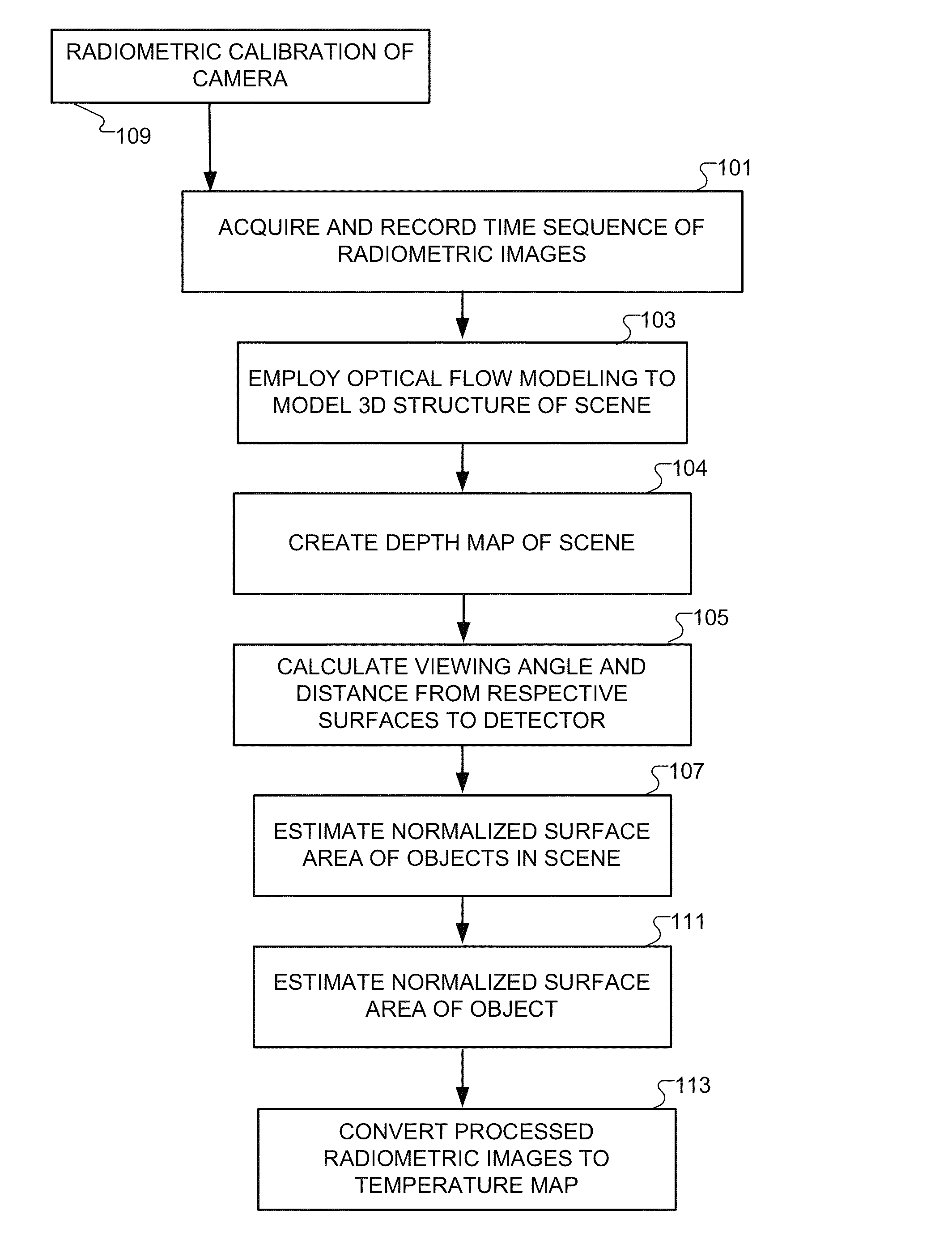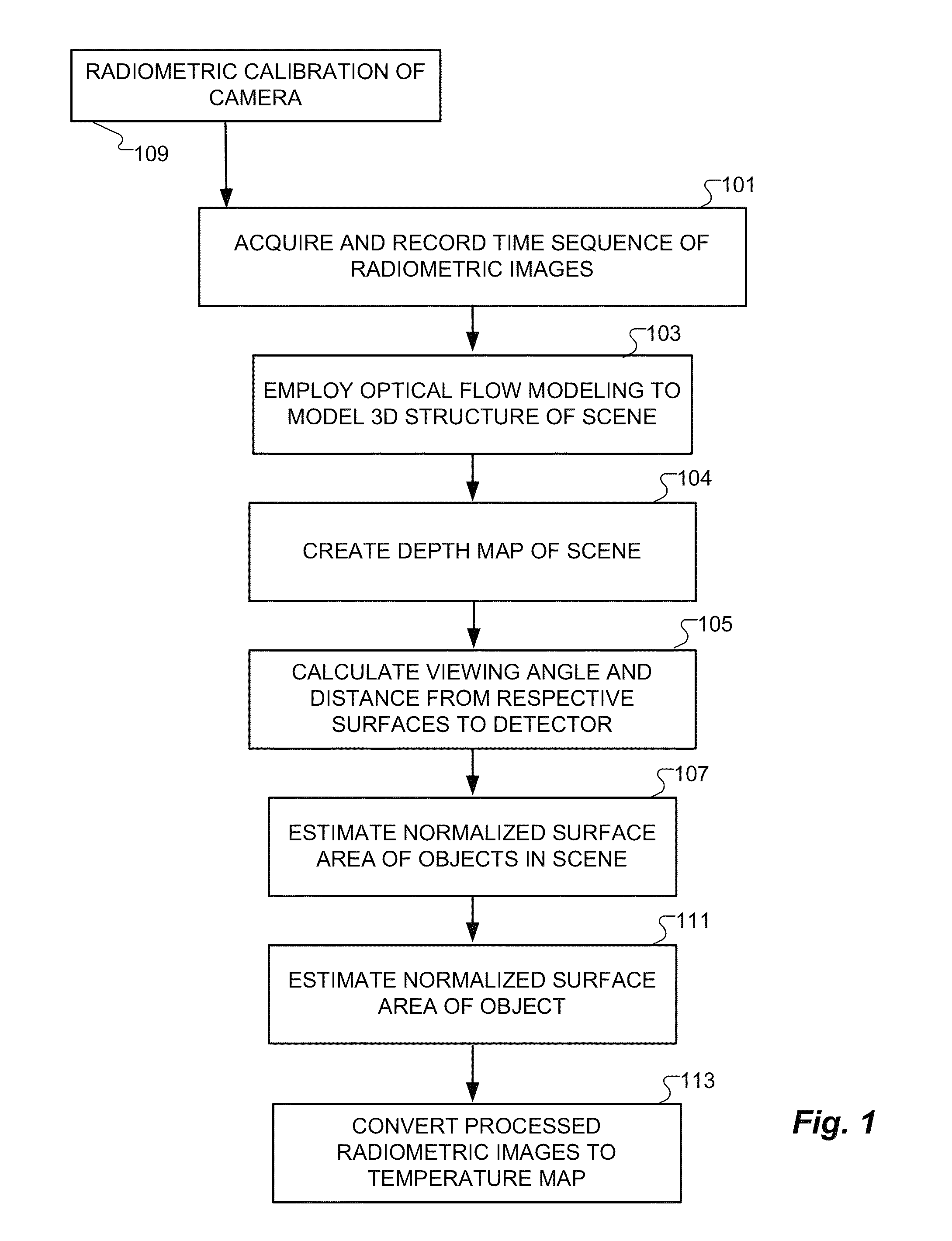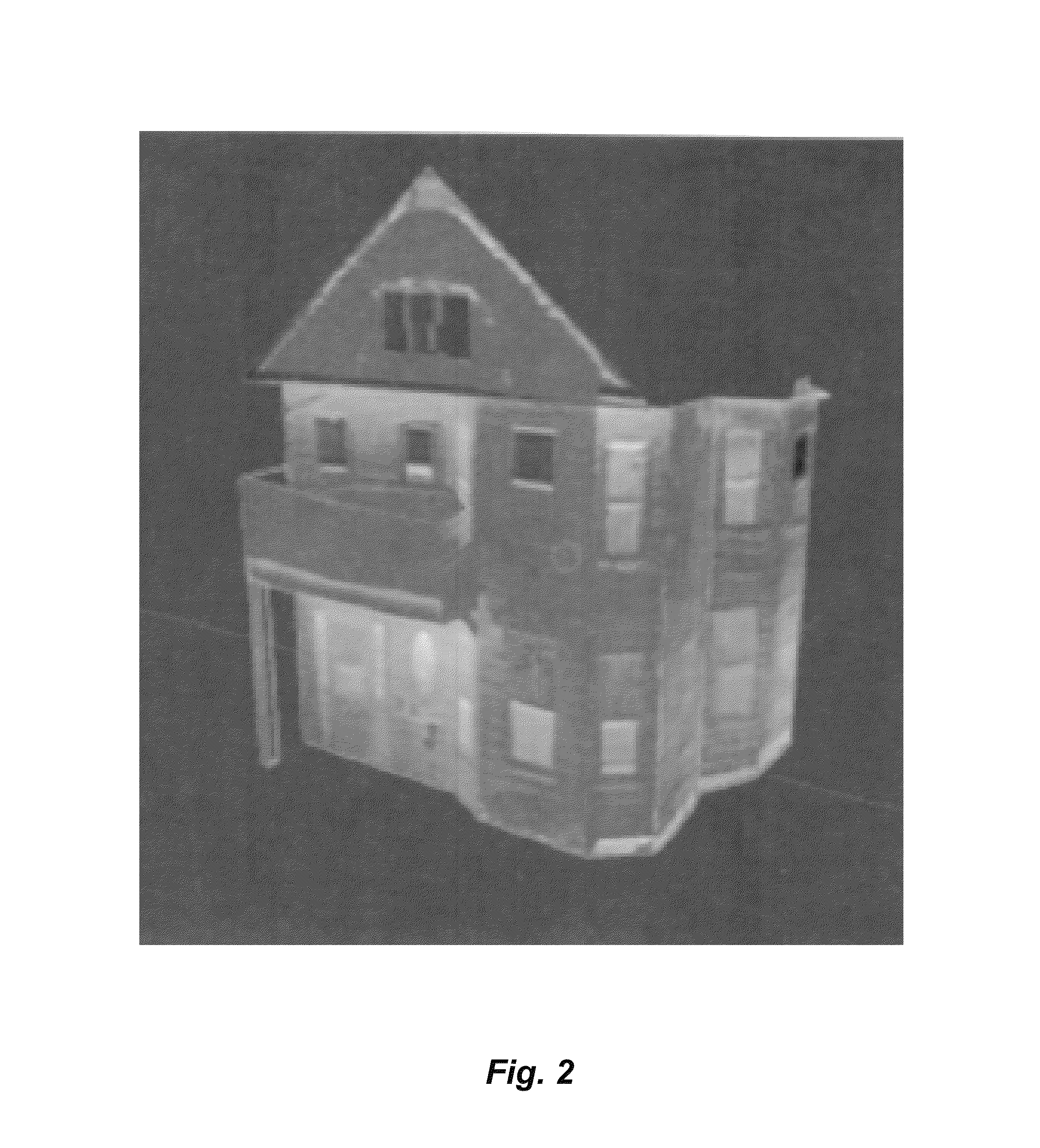3D radiometry
a three-dimensional, environment-based technology, applied in the direction of optical radiation measurement, instruments, heat measurement, etc., can solve the problems of thermography complications, and the radiometric analysis techniques, employed to date, are far too cumbersome for this purpos
- Summary
- Abstract
- Description
- Claims
- Application Information
AI Technical Summary
Benefits of technology
Problems solved by technology
Method used
Image
Examples
Embodiment Construction
[0017]Accordingly, embodiments of the present invention teach a novel approach to radiometry as it relates to inferring temperature based on the measured radiance in complex 3D environments and correcting for non-Lambertian behaviors of such environments, as experienced when performing drive-by imaging. In accordance with certain embodiments of the invention, methods are provided for deriving temperature information with respect to surfaces imaged radiometrically by means of a radiometric camera in motion with respect to the imaged surfaces. Such methods have steps of:[0018]a. acquiring and storing a time sequence of frames of radiometric data including a plurality of radiometric images from distinct angles of a scene containing the surfaces;[0019]b. modeling a 3D structure of the scene;[0020]c. inferring viewing angles and distances to the imaged surfaces based on the modeled 3D structure;[0021]d. calculating normalized surface areas of the imaged surfaces based on the inferred vie...
PUM
 Login to View More
Login to View More Abstract
Description
Claims
Application Information
 Login to View More
Login to View More - R&D
- Intellectual Property
- Life Sciences
- Materials
- Tech Scout
- Unparalleled Data Quality
- Higher Quality Content
- 60% Fewer Hallucinations
Browse by: Latest US Patents, China's latest patents, Technical Efficacy Thesaurus, Application Domain, Technology Topic, Popular Technical Reports.
© 2025 PatSnap. All rights reserved.Legal|Privacy policy|Modern Slavery Act Transparency Statement|Sitemap|About US| Contact US: help@patsnap.com



